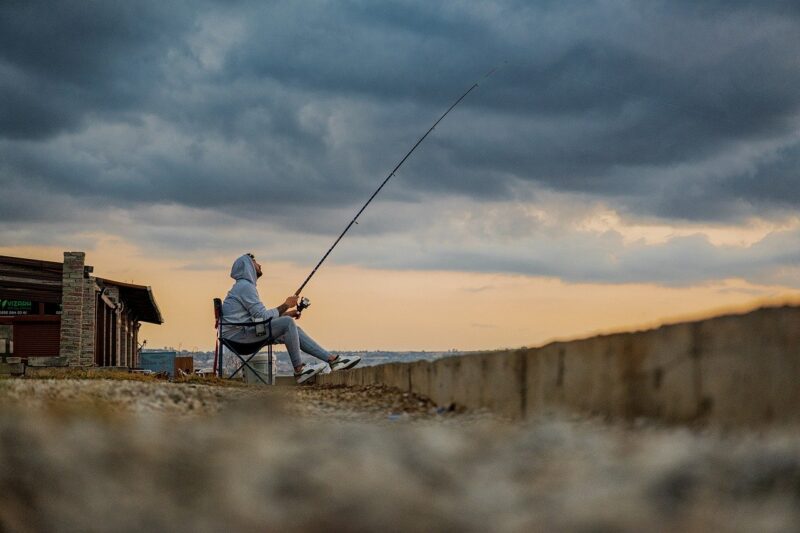Baiting the Biggest Fish: Expert Tips for an Unforgettable Fishing Adventure
November 18, 2024

Fishing is not merely a pastime; it can be a life-changing experience full of excitement, serenity, and unforgettable memories. Whether you’re a seasoned angler or a beginner looking to cast your first line, having the right techniques and strategies can significantly enhance your fishing adventure. In this comprehensive guide, we will dive deep into the art of fishing, focusing on baiting the biggest fish and ensuring you have a remarkable outing on the water.
1. Understanding Different Types of Fishing
Before you can effectively fish for large catches, it’s crucial to understand the different types of fishing. Each method has its benefits and is suited for various environments and fish species.
– **Freshwater Fishing:** This type includes fishing in lakes, rivers, and streams. Freshwater fish like bass, trout, and catfish are common targets.
– **Saltwater Fishing:** This involves fishing in oceans and seas. Target species include marlin, tuna, and snapper. Saltwater fishing often requires different equipment and techniques.
– **Fly Fishing:** A specialized form of fishing primarily for trout and salmon, using lightweight lures called flies. This method requires skill and patience but can be rewarding.
– **Ice Fishing:** A unique experience that involves fishing through ice-covered lakes during winter.
Understanding these methods will help you choose the right approach for your fishing adventure.
2. Choosing Your Fishing Location
The location you choose for fishing plays a significant role in your success. Different fish species inhabit various environments, and understanding where to find them can be the difference between a fantastic catch and a day of disappointment.
– **Rivers and Streams:** Fast-moving waters with plenty of structure (rocks, fallen trees) are ideal for trout and bass. Look for slow pools and eddies.
– **Lakes:** Still waters offer a variety of fish. Look for shallow bays and drop-offs where fish like to hide.
– **Ocean or Sea:** Target areas around reefs, wrecks, or underwater structures that attract larger fish.
Before you go fishing, research local hotspots, or consider hiring a guide familiar with the area.
3. Essential Gear for Big Fish Fishing
Having the right gear is critical for landing big fish. Here’s a breakdown of essential fishing equipment:
– **Rod and Reel:** Choose a sturdy rod designed for big game fishing. Pair it with a high-quality reel that can handle heavy lines and large fish.
– **Line:** Use braided line for strength and sensitivity. It’s less likely to snap when fighting a big fish.
– **Hooks:** Choose heavy-duty hooks designed to hold larger fish. Circle hooks are great for catch-and-release.
– **Baits and Lures:** Select live bait like minnows for freshwater or shrimp for saltwater. Lures that mimic prey can also be effective.
– **Tackle Box:** Organize your hooks, sinkers, lures, and other essential gear neatly in a tackle box for easy access.
Investing in quality gear sets the foundation for successful fishing trips.
4. Baiting Techniques for Success
Bait selection and presentation are crucial elements when targeting big fish.
– **Live Bait:** Using live bait such as worms, leeches, or minnows can tremendously increase your chances of a significant catch. Live bait is more enticing to fish than artificial lures.
– **Cut Bait:** For larger predators like catfish or sharks, using cut bait (pieces of other fish) can be beneficial as it releases scent and attracts them from distance.
– **Lures:** When using lures, remember to choose ones that mimic the natural movements of prey. Experimenting with different colors and sizes can help discover what fish are biting.
– **Scented Products:** Many anglers use scented attractants to enhance their bait. A few drops can make a significant difference in enticing fish.
When presenting your bait, ensure it is set at the right depth and in the appropriate current to draw in fish effectively.
5. Timing and Weather Conditions
Timing is everything in fishing. Understanding local weather patterns and fish behavior can significantly improve your chances.
– **Best Times to Fish:** Early mornings and late afternoons are often the prime times for fishing as fish tend to be more active during these periods. Cloudy days can also enhance fishing opportunities as fish feel more comfortable exploring.
– **Seasonal Considerations:** Fish are often more active in the spring and fall. Changes in water temperature can cause fish to move into shallow waters.
– **Weather Patterns:** Since fish are sensitive to changes in weather, they tend to feed more aggressively before storms or rain.
Planning your fishing trip around these factors can lead to more productive outings.
6. Techniques for Landing Big Fish
Successfully landing a big fish requires skill and technique. Here are tips to help you reel in that trophy catch:
– **Use a Proper Drag Setting:** Adjust your reel’s drag to allow the fish to run without breaking the line. This helps prevent the fish from becoming stressed or snapping the line.
– **Patience is Key:** When you hook a large fish, let it fight. Avoid reeling too quickly, as this can tire the fish out and cause it to break free.
– **Angle Your Rod:** Keeping the rod at an angle helps maintain tension on the line. You want to keep constant pressure while allowing the fish to run when needed.
– **Netting Techniques:** Once the fish is close, use a net to bring it onboard. Be gentle and make sure the fish is exhausted before attempting to lift it out of the water.
Acquiring these skills will enhance your chances of successfully landing big fish.
7. Conservation and Responsible Fishing Practices
As anglers, respecting the environment and practicing responsible fishing is imperative. Here are a few conservation tips:
– **Catch and Release:** If you’re not planning to keep the fish, practice catch and release to ensure future generations also enjoy fishing. Use barbless hooks to minimize harm.
– **Respect Local Regulations:** Adhere to local fishing regulations regarding size limits, seasons, and catch quotas. This helps maintain healthy fish populations.
– **Leave No Trace:** Always clean up after your fishing trip, leaving no garbage behind. Respect nature and the environment to preserve it for others.
By following these practices, you contribute to preserving fishing ecosystems for the future.
Conclusion
Fishing is about more than just catching fish; it’s about creating memories, connecting with nature, and enjoying the tranquility of the great outdoors. By embracing the tips outlined in this guide, including understanding different fishing types, choosing the right location, using effective baiting techniques, and employing responsible practices, you’re on your way to a memorable and successful fishing adventure. So gear up, pack your tackle box, and set off on the water. Big catches await!





